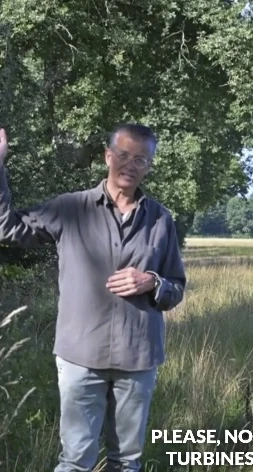
Directly behind my house begins a world that captivates me anew every day. The Hamburg Rissen-Sülldorf Feldmark – a cultural landscape of a type rarely found anymore. Here I cycle, hike for hours with my dogs through fields, meadows, and forests. I breathe freely when I'm here.
Between hedgerows of hawthorn and blackthorn and ancient solitary oaks, fresh green glows in spring, and in winter they provide food for birds. Bullfinches that usually spend winter here. In summer: red kites, storks, cranes, red-backed shrikes, cuckoos – even kingfishers can be spotted and have their habitat here. These hedgerows are more than just field boundaries – they are lifelines.
Here cattle and horses graze. Horses aren't always ideal for nature when everything is paddocked. Cattle, as cloven-hoofed animals, enliven the soil in pastures. From what they leave behind grows new life – a richly set table for storks and crane birds.
And then the moors. The Schnaakenmoor and Butterbargsmoor are valuable nature reserves within the approximately 580-hectare Klövensteen. Together with the Feldmark and additional areas, this creates a landscape area of about 1,500 hectares. Once, moorland sheep roamed here, keeping the heath open and preventing the moors from becoming overgrown. Moors store enormous amounts of CO? and are biodiversity hotspots – true climate protectors, quiet and unassuming.
Field paths, bridle paths, bicycle paths – this area is a local recreation space of immeasurable value. Those who travel here know how much such landscapes are missed once they disappear. It's not a "wild" natural space, but a cultural landscape – shaped and maintained by humans, yet in an interesting balance.
And now a wind farm is supposed to be built here. Wind power is irreversible technology – but not in this place. Not in one of the few remaining intact landscape protection and nature conservation areas that characterize Hamburg. The planned installations would not only destroy the visual appeal but throw the entire ecological structure out of balance – habitats that have developed over centuries would be fragmented.
Yes, we need renewable energy. But we also need landscapes like this. Wind turbines belong by the highway, in the harbor – where they don't destroy habitat that has already become so rare.
This cultural landscape is more than just a beautiful backdrop. It's a living organism, a network of relationships between plants, animals, livestock, soil, and climate – and that's exactly why we must protect it.